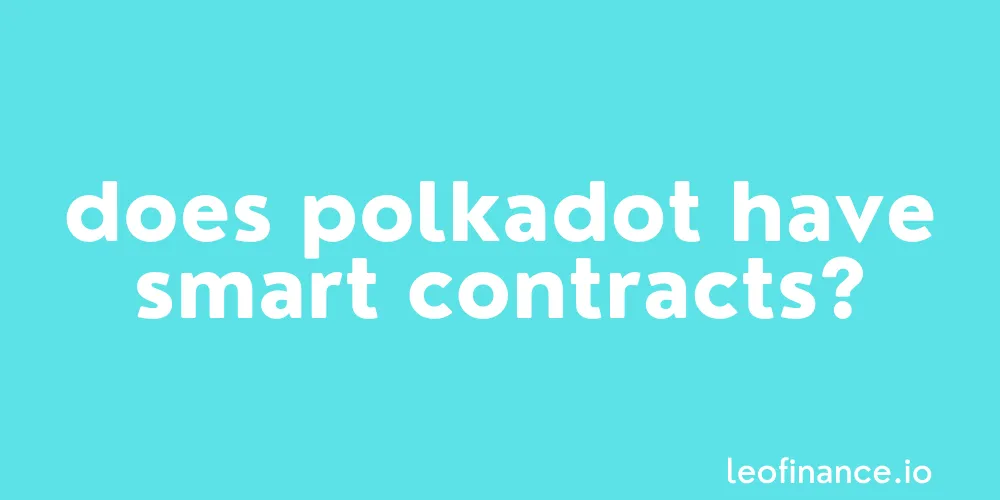
Parachains on Polkadot have smart contract capabilities, but the Polkadot relay chain itself does not.
Polkadot itself is not a smart contract platform, but a network that connects heterogeneous blockchains.
Polkadot is a sharded multichain network which means that transactions can be processed on several chains at the same time.
These connected blockchains are what’s known as parachains.
As a result, scalability is vastly improved when compared to traditional smart contract blockchains such as Ethereum and the like.
So while the Polkadot relay chain itself does not technically offer support for smart contracts, Parachains that are built on Polkadot do have smart contract capabilities.
This subsection of our Poldadot guide discusses the concept of parachains on Polkadot and what this means when it comes to smart contracts.
The Relay Chain - No smart contract capabilities...
The relay chain can be thought of as the primary chain of Polkadot and does not have smart contract capabilities.
It forms what you could call the central artery of Polkadot, and is responsible for the following functions:
- Shared security
- Consensus
- Cross-chain interoperability.
As you can see, only a relatively small number of transaction types exist in the relay chain, mostly centred around interacting with the governance mechanism and participating in consensus.
The relay chain on Polkadot is designed to have the minimal functionality that you see here, instead leaving the fun stuff like smart contract capabilities to parachains.
Polkadot validators stake their native token (DOT) on the relay chain to verify transactions from connected parachains.
The relay chain’s sole responsibility is to secure and coordinate the entire system.
Parachains - Smart contract capabilities!
Parachains are independent layer-1 blockchains that feature smart contract capabilities,
Taking their name from the fact they run in parallel to one another and the Polkadot relay chain itself, each Parachain features different:
- Designs
- Tokenomics
- Functionality
- Governance
As they’re still connected to Polkadot via the relay chain, parachains are able to preserve the security that comes with it, while retaining full control.
In addition to tokens and data exchange, Parachains do not need to bootstrap their own validator communities.
Being completely separate layer-1 blockchains, this is a key scaling differential that Polkadot has against its main competitor Ethereum.
Ethereum for example has gone down the layer-2 route to scale, with blockchains such as Polygon worth a further look when you get a chance.
Final thoughts on Polkadot’s smart contract capabilities
As you can see, Polkadot’s smart contract capabilities come from parachains rather than the relay chain itself.
If you’re running a high-traffic, high-throughput dApp with a large number of users, deploying on Polkadot is extremely economical.
Polkadot offers the flexibility and freedom of having your own layer-1 blockchain, without being forced to pass gas fees on to their end-users.
Thus making dApps that run on Polkadot parachains extremely simple and user friendly.
Best of probabilities to you.
Direct from the desk of Dane Williams.
Why not leave a comment and share your thoughts on Polkadot’s smart contract capabilities within the comments section below? All comments that add something to the discussion will be upvoted.
This Polkadot coin blog is exclusive to leofinance.io.
Posted Using LeoFinance Beta
Return from Does Polkadot have smart contracts? to forexbrokr's Web3 Blog

